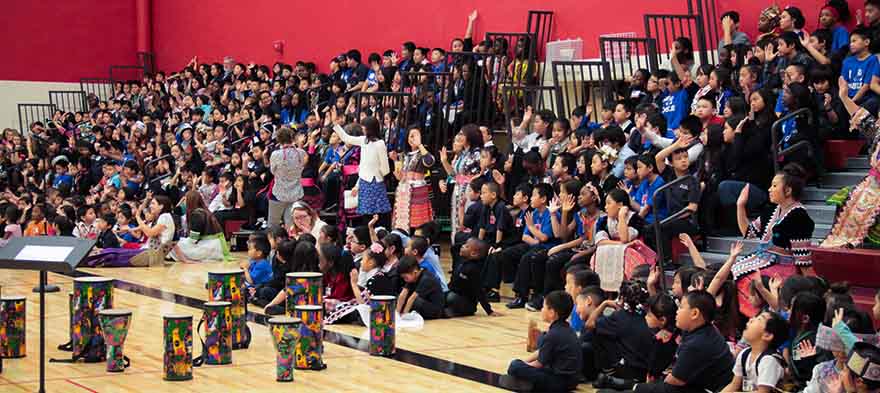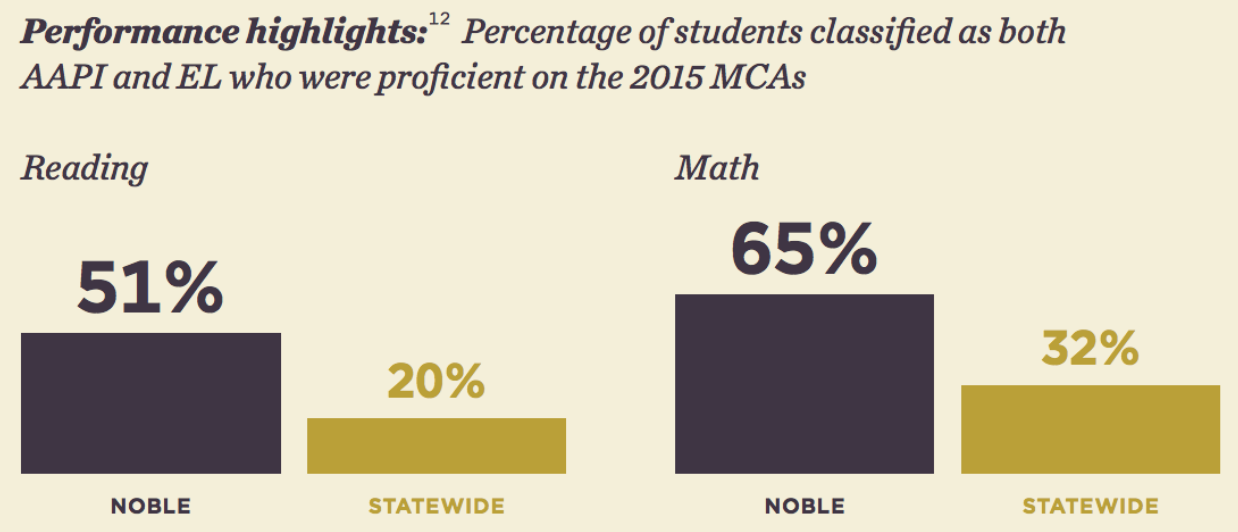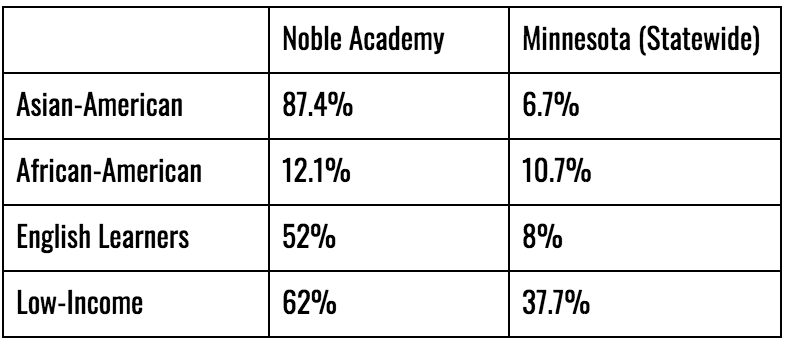
 Over time, the school’s success has also attracted a number of non-Hmong, English-dominant families. These students get the same Hmong language and culture lessons. “Some of them love it, some of them hate it,” says Yang. “But it all starts with you building that relationship with them...they get excited learning a different language.” Noble’s enrollment differs significantly from the state’s. Noble enrolls over 6 times the percentage of English-learners enrolled across the state of Minnesota, and more than 1.5 times the percentage of students from low-income families.
Over time, the school’s success has also attracted a number of non-Hmong, English-dominant families. These students get the same Hmong language and culture lessons. “Some of them love it, some of them hate it,” says Yang. “But it all starts with you building that relationship with them...they get excited learning a different language.” Noble’s enrollment differs significantly from the state’s. Noble enrolls over 6 times the percentage of English-learners enrolled across the state of Minnesota, and more than 1.5 times the percentage of students from low-income families.
 Meanwhile, Noble’s
schoolwide rates of academic proficiency (or better) in math and science slightly outpace the state’s. By the time Noble students are in eighth grade, they’re outperforming state proficiency rates in math, science
and reading. Nicole Neidermeier, a Noble teacher and teacher coach, credits the school’s culture. She says that, at Noble, “The cool kids are the smart kids.” Perhaps unsurprisingly, school leaders say that there were over 200 children on the school’s waitlist for the 2017–18 school year. This is an exciting prospect: A school designed to serve the unique needs of Hmong-speaking students is now becoming a school that’s meeting the needs of students outside that community. A school built around preserving an immigrant community’s language and culture is also advancing the linguistic and cultural development of English-dominant children. So, perhaps now, just as Sandburg described, these Twin Cities children will grow up, head out to find their futures, and find that the whole world is now more like Minnesota than ever before.
Meanwhile, Noble’s
schoolwide rates of academic proficiency (or better) in math and science slightly outpace the state’s. By the time Noble students are in eighth grade, they’re outperforming state proficiency rates in math, science
and reading. Nicole Neidermeier, a Noble teacher and teacher coach, credits the school’s culture. She says that, at Noble, “The cool kids are the smart kids.” Perhaps unsurprisingly, school leaders say that there were over 200 children on the school’s waitlist for the 2017–18 school year. This is an exciting prospect: A school designed to serve the unique needs of Hmong-speaking students is now becoming a school that’s meeting the needs of students outside that community. A school built around preserving an immigrant community’s language and culture is also advancing the linguistic and cultural development of English-dominant children. So, perhaps now, just as Sandburg described, these Twin Cities children will grow up, head out to find their futures, and find that the whole world is now more like Minnesota than ever before.
Conor P. Williams is a fellow at The Century Foundation. Williams was previously the founding director of the New America’s Dual Language Learners National Work Group and a senior researcher in New America's Education Policy Program. He began his career as a first grade teacher in Crown Heights, Brooklyn. Dr. Williams holds a Ph.D in government from Georgetown University, a M.S. in teaching from Pace University, and a B.A. from Bowdoin College. Most importantly, he's a dad.
The fight for educational equity has never been just about schools. The real North Star for this work is providing opportunities for each child to thrive into adulthood. This means that our advocacy...
Your donation will support the work we do at brightbeam to shine a light on the voices who challenge decision makers to provide the learning opportunities all children need to thrive.
Ed Post is the flagship website platform of brightbeam, a 501(c3) network of education activists and influencers demanding a better education and a brighter future for every child.
© 2020–2024 brightbeam. All rights reserved.